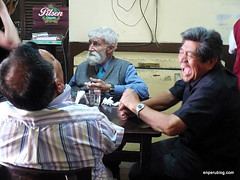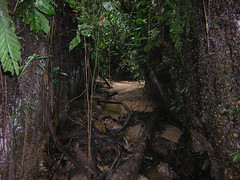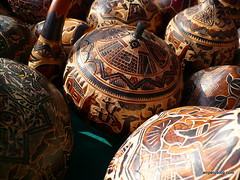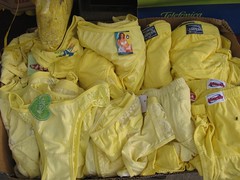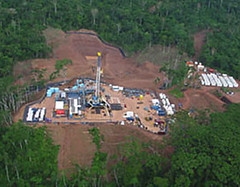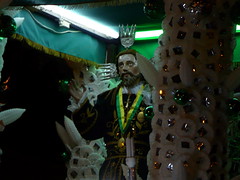Klaus Koschmieder – New Chachapoyan Discoveries
German archaeologist Klaus Koschmieder has spent three years exploring and investigating an area rich in long lost archaeological remains of the Chachapoyas culture. Despite his amazing success in discovering previously unknown cliff face sarcophagi on an ever-reducing budget, his project may come to an abrupt end thanks to Peru’s bureaucratic and incompetent Instituto Nacional de Cultura (INC).
[Adapted from the story of Álvaro Rocha Revilla who followed Klaus into the dense forest]
How did Klaus come to make the discoveries that many archaeologists can only dream of? Coincidence, destiny, hard work or a mixture of them all?
Klaus visited Peru in 1982 as a tourist, during which time he visited Kuelap and other important sites of the Chachapoyas culture. At that time he’d never have dreamed of working here making these lucky discoveries. He went home taking with him a desire to one day study this fascinating civilisation. In 1986, during his first year in the Free University of Berlin, he took a course led by Peter Lerche, an ethno-historian and now mayor of the city of Chachapoyas.
“It was pure coincidence”, says Klaus, and it was this that pushed him to follow his dream of studying the ancient Chachapoyas people.
To find out more about Klaus’s work, we travel to the town of Lamud in the province of Luya in Amazonas. The area feels like the end of the world, deep chasms and steep cliffs separate the town from impenetrable wilderness that extends beyond. Running through great valleys below are rivers like the splendid Utcubamba, fed by some of the tallest waterfalls in the world. The walls of the valley are a mix of dense forest and rocky cliff faces, and it is here that the magnificent sarcophagi are hidden. They are similar to those that are found, for example, near San Antonio, where another German archaeologist working with Klaus was attacked by hundreds of bees, and was on the verge of death for almost four days.
The first day we went out with Klaus he handed me some gloves so I wouldn’t cut myself on the sharp foliage I’d have to push out of my way. We also brought with us a rope to help us climb, and those hats that bee-keepers use so we wouldn’t get stung by bees. I asked Klaus if we had to wear them, in case we had a run-in with the ferocious insects. He told me not to bother, that the first thing you should do if you see a group of bees was run. That day, luckily, we didn’t need to run anywhere – not that you could anyway – the rough terrain meant you could barely stand, let alone walk.
We visited the Jucusbamba Archaeological Project. There were two intact sarcophagi and many other desecrated ones. In one of these we found coins – perhaps an attempt by a repentant or superstitious person to pay for the damage that they had caused. The damage was probably done by local hunters who didn’t realise that these tombs didn’t contain any precious objects or metals. Just bones. The value of these sarcophagi is in their mere existence, and when they are destroyed they loose their soul, their essence. You can’t repair this damage, nor pay for it with coins.
The next two days the routine was like this: wake up early, walk for hours – with rain or with sun, come across snakes and rodents, see the tracks of foxes and follow paths that only animals could see – with sharp drops and heart-pounding climbs. But at the end of the road there was always a reward, a group of sarcophagi in the middle of nowhere, giving the whole trip meaning. We’d go to sleep early too, with sore legs and cramps.
In 1988 Klaus returned to Peru. He had a scholarship for one year in the Universidad Católica, but he stayed here in Peru for three years. He took part in various excavations – in the huaca Santa Cruz, in San Isidro, and in Vicus, Piura. He also participated in digs in Lambayeque – Sipán and Túcume – along with Walter Alva and even with Shimada in Batán Grande. When he could, he went to visit Chachapoyas territory. Later in Berlin in 1992 he was awarded his masters degree and returned to Peru again in 1995 with a project for his doctorate that he worked on until 1996 in a Chimú site in the Casma valley. Later he spent two years working in the south, on the pampas of Palpa near the Nasca lines.
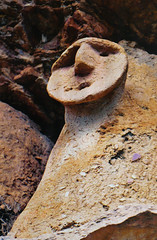
One of two hundred new discoveries
In 1998 he arrived in Luya and Lamud. “I visited the known sites and some others. It was then I got the idea to try to obtain financing from the German Government for an investigative project”, Klaus stated. The financing was awarded in 2005. Germany, through the German Community of Investigators (DFG) head-quartered in Bonn, sponsored and is very satisfied with his work. Klaus has made as many as 200 important discoveries. Peru’s INC, for its part, collaborated by loaning the requested facilities. However, all help from them ceased abruptly when Klaus requested permission for the last phase of the work in June of 2008. The INC started making extreme demands as to how they wanted the work carried out, despite recent success and Klaus’s constantly serious and professional manner.
Klaus was forced to change his timetable, reducing his time in the field so he could fulfil the INC’s requests to complete a mountain of paperwork. It was originally thought that the paperwork would take a month to complete and for permits to be issued, and that work would be able to begin in July.
But three months have now passed since the permit applications were handed to director Yuri Castro Chirinos, and the INC have said and done nothing at all. Klaus has had to travel to Lima many times to try to speed up the INCs prehistoric, bureaucratic and corrupt processes that seemed not to apply to the first dozen phases of the work. He is as yet unsuccessful.
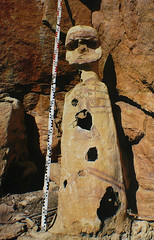
Original resting place or not?
Now, as the approaching rainy season lingers over his plans, Klaus has had to postpone all work until March or April of 2009. The worst thing is that the INC’s misgivings – misgivings that according to them merit months of delays – are completely absurd and come from bureaucrats who haven’t even read the text of his proposed project. One example is the demand by the INC’s Direction of Archaeology to specify “the quantity or number of sites to excavate”, when it is written as plain as day in Klaus’s submitted documentation, page 19, that he wants to study exactly 10. Then in the following pages, he details each and every one of the 10 sites one by one explaining exactly what he wants to do.
The INC also demand, against all logic, highly detailed scale maps when such maps would be impossible to produce when talking about near vertical cliff faces as yet completely unexplored – and can’t be explored until the INC grants permission. “The locations are very steep and we can’t take topographical equipment because it weighs too much, we propose to make maps after we get up there, not before or during”, Klaus explains.
Klaus is using the time wasted to prepare his book, detailing the conclusions he has reached from his discoveries. The evidence so far permits him to be sure that 99% of the sarcophagi are made from stone and mud, and just a little straw – not reeds and mud as Federico Kauffmann Doig affirmed based on his studies of the Karajía tombs. “Dr. Kauffmann thought that the Karajía sarcophagi were the typical model of the chachapoyas, when in reality that are the exception”, explains Klaus.
His work has also allowed Klaus to discover than around 90% of the burials are secondary – these bones, wrapped in animal skins and bound by rope were not originally buried here. Moved from their original tombs, like the empty ones found in a prehispanic building in Kacta, the remains of the Chachapoyan elite where moved to these remote hillsides to be reburied at a later date.
This is precisely one of the points laid out in the application to the INC, asking for permission to open one of the sarcophagi and come to a definitive conclusion as to whether most of these burials were indeed secondary. But all work is paralysed thanks to the ridiculous incompetence of the INC and the incredible stupidity of its bureaucrats like Yuri Castro Chirinos, who seems to also be completely illiterate, who are a deep embarrassment to Peru and its people.
Tags: amazonas, chachapoyas, INC, Klaus Koschmieder, tombs





